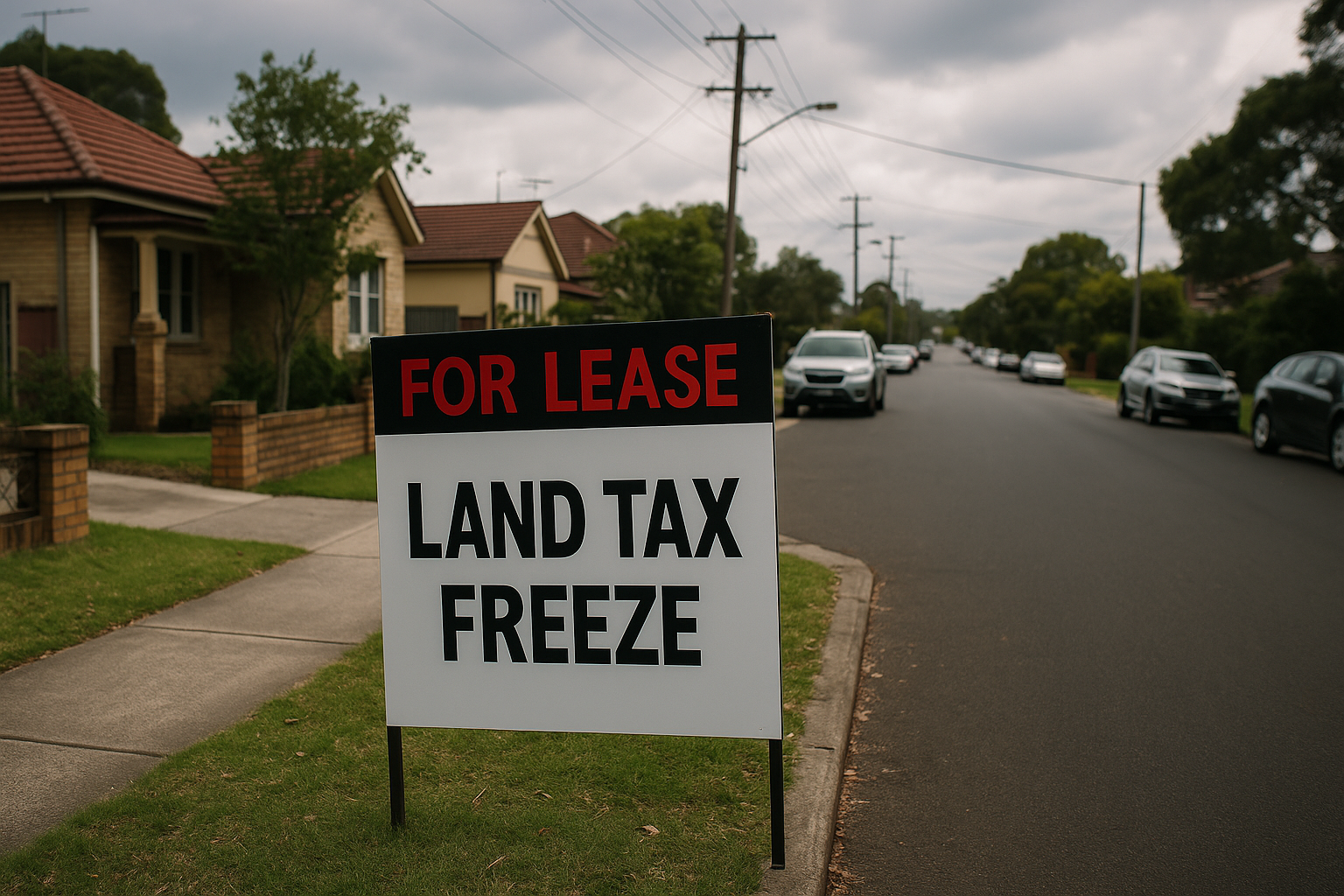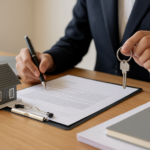
Key takeaways
The NSW Government has frozen land tax thresholds at $1.075 million (general) and $6.571 million (premium) indefinitely.
As land values rise, more of each property’s value will become taxable, increasing revenue automatically — a form of “bracket creep” for property owners.
The government expects to collect an extra $1.5 billion over four years just from this freeze.
Previously exempt owners — particularly in Sydney and regional growth areas — will start receiving land tax bills as valuations rise above the frozen thresholds.
SMSFs and trusts are especially exposed since they get limited or no threshold relief. This means investors could end up paying land tax even if they don’t buy additional properties.
Because the freeze only affects investment properties, the added costs will fall entirely on landlords.
With NSW’s vacancy rates below 1%, investors are likely to pass higher costs onto tenants via rent increases. The result: higher rents and reduced rental supply, further straining the housing market.
Most investors expect their tax bills to rise when they buy more property, not when they simply sit still.
Yet that’s exactly what’s about to happen in New South Wales.
The NSW Government’s recent decision to freeze land tax thresholds means property owners from mum-and-dad investors to self-managed super funds (SMSFs) will pay more tax each year on the same properties, as land values rise but thresholds stand still.
Prior to this, the land tax thresholds were periodically raised as land values increased.
It’s a subtle but powerful form of tax creep, and according to the Government’s own budget papers, it’s projected to raise an extra $1.5 billion in revenue over the next four years. (NSW Budget 2024–25, Budget Paper No. 1, Chapter 4, Revenue, p. 89)

What has changed
For the 2024/25 land tax year, the thresholds for individuals and similarly identified entities remain as follows. Please note that these thresholds do not apply to trusts in general unless specifically captured:
- General threshold: $1,075,000
- Premium threshold: $6,571,000
- Tax rate: $100 + 1.6 % of land value above the general threshold, and 2 % above the premium threshold
In the past, these thresholds typically increased each year, providing a buffer against rising land values. But from 2024/25 onward, the Government has frozen both thresholds indefinitely.
This means that as property values continue to grow, a larger share of each owner’s land value becomes taxable, automatically increasing revenue — without a single vote or new law.
How the freeze works against you
To understand the effect, consider a simple example:
In 2024, an investor owns NSW property with an aggregate unimproved land value of $950,000 being below the threshold, so no land tax applies.
If the land values rise by just 5 % per year, by 2027 that portfolio’s land value would be about $1.1 million.
Even without buying another property, the investor would now exceed the frozen threshold and face a land tax bill of roughly $440, rising annually as values increase.
That’s how this policy quietly pulls more property owners into the tax net each year, it’s automatic tax growth without the optics of a rate hike. Investors also need to consider the grouping provisions in NSW.
A form of “bracket creep” for property
Economists call this bracket creep i.e. where tax thresholds stay fixed while the underlying base grows.
In the context of land tax, it means ordinary appreciation in property values becomes a source of permanent new revenue for the state.
According to the NSW Budget 2024–25, the land tax threshold freeze alone will deliver approximately $1.5 billion in extra revenue over four years, contributing to an overall $5.6 billion increase in forecast land tax receipts.
Put simply, the Government will collect billions more, not because rates went up, but because thresholds didn’t.
Who will be caught
- Individual Investors
Many owners who’ve comfortably sat below the land tax threshold will begin to receive assessments over the next few years, especially in Sydney and regional growth corridors where land values have surged.
- Self-Managed Super Funds (SMSFs)
SMSFs are assessed as separate taxpayers and entitled to only one land tax threshold per fund, regardless of how many properties they hold or how they are financed.
A modest increase in land values can quickly push an SMSF above the limit particularly where the fund owns commercial property directly or through holding trusts.
- Trusts
Trusts not classified as “fixed” for land tax purposes receive no threshold and are taxed from the first dollar of land value.
For investors using unit or discretionary trusts, the freeze magnifies this disadvantage, there’s no threshold relief and now no future indexation either.
The real risk isn’t just being caught by land tax for the first time; it’s the compounding impact on cash flow and long-term returns. Each year that property values increase, your tax liability will grow even if you’ve made no changes to your portfolio.
Land tax is not a one-off; it’s an annual recurring expense that directly eats into rental yield and portfolio performance. Yes, it is a tax-deductible expense for investors, but you still pay.
For SMSFs, it also affects fund liquidity and the ability to maintain compliance with contribution and pension payment obligations.
Will the Land Tax freeze push rents higher?
Although the freeze technically targets property owners, it’s inevitable that tenants will feel the effects.
Land tax does not apply to owner-occupied homes, only to investment properties, so the entire burden falls on investors, who provide the bulk of NSW’s rental housing stock.
When the cost of holding investment property rises, landlords naturally seek to maintain returns through higher rents over time.
The economic logic is straightforward: when you raise the cost of supplying something that is already in short supply, the price to the consumer, in this case, rent will rise. Not quite in the vein of “for each action there is an equal and opposite reaction” but you get my point.
At a time when vacancy rates are below 1 % in many regions, this policy acts as a hidden accelerator for rent inflation.
As thresholds stay frozen and valuations rise, more investors will cross into the land-tax system, increasing annual holding costs.
For some, this will make investment less viable prompting sales or discouraging new entrants. Both outcomes reduce rental supply, compounding pressure on tenants.
The NSW Treasury’s own modelling acknowledges this revenue windfall, estimating $1.5 billion in additional collections from the freeze alone. That money comes almost entirely from the investor segment of the market, the same segment responsible for supplying rental housing.
A lagging but persistent effect
Land tax assessments are based on unimproved land values, which usually lag the market by about 12 to 18 months. So, the financial hit to investors and the resulting flow-through to rents will be gradual but persistent.
This will be magnified as previously there was a slight softening on increases given three year average land values were used which will now see a reduced benefit from averaging especially in a rising market.
By 2027 or 2028, when current valuation increases fully cycle through the system, we’re likely to see another wave of rental price increases indirectly driven by the freeze.
Planning ahead
While investors can’t change government policy, they can prepare for it.
- Review your exposure – Check your aggregate land values across all entities and ownership structures.
- Model future increases – make your own assumptions on land-value growth per year to see when you’ll likely exceed the threshold.
- Review trust deeds – Ensure any trusts holding property qualify as fixed trusts to retain threshold access if the benefits outweigh the negatives.
- Review your buying entity options – not all entities are treated equally for land tax; some still can provide land tax benefits.
- Budget for rising land tax – Treat it as a predictable, increasing cost of ownership.
- Seek professional advice – Work with your wealth adviser to structure ownership efficiently and preserve cash flow.
Some final thoughts
The NSW land tax threshold freeze represents a quiet but powerful shift in how the state raises revenue.
Without increasing tax rates, the Government will collect billions more by not moving the goalposts, capturing investors whose only “crime” is owning appreciating land.
This measure might balance the state’s books but it does so by placing greater strain on those providing the housing stock NSW desperately needs. In the 2024/2025 NSW budget it is estimated that approximately 44% of taxes collected will come from property. This additional grab is on top of a significant increase in land tax revenue which was generated out of the growth in values.
Ultimately, the freeze won’t just cost investors more it will flow through to tenants via higher rents and reduced supply.
For investors and SMSF trustees, now is the time to review your structure, forecast your exposure, and plan ahead because while thresholds are frozen, your land values won’t be.














